Mapping Melbourne for Our Creative Heart
Deidre Ogilvie blogs about her initial ideas
After the first meeting of our group, I tried to put together an amalgam of as many ideas as possible that had been put forward.
I liked that we came up with a lot of different ideas that we could sort through. We then put them up for discussion, so we could narrow them down to a workable number of possibilities.

Mulling over ideas
Afterwards, I tried to incorporate the main thoughts that came out of our first meeting.
The group decided that we did not want a conventional rectangular shape. Several people suggested the shape of the City of Melbourne map.
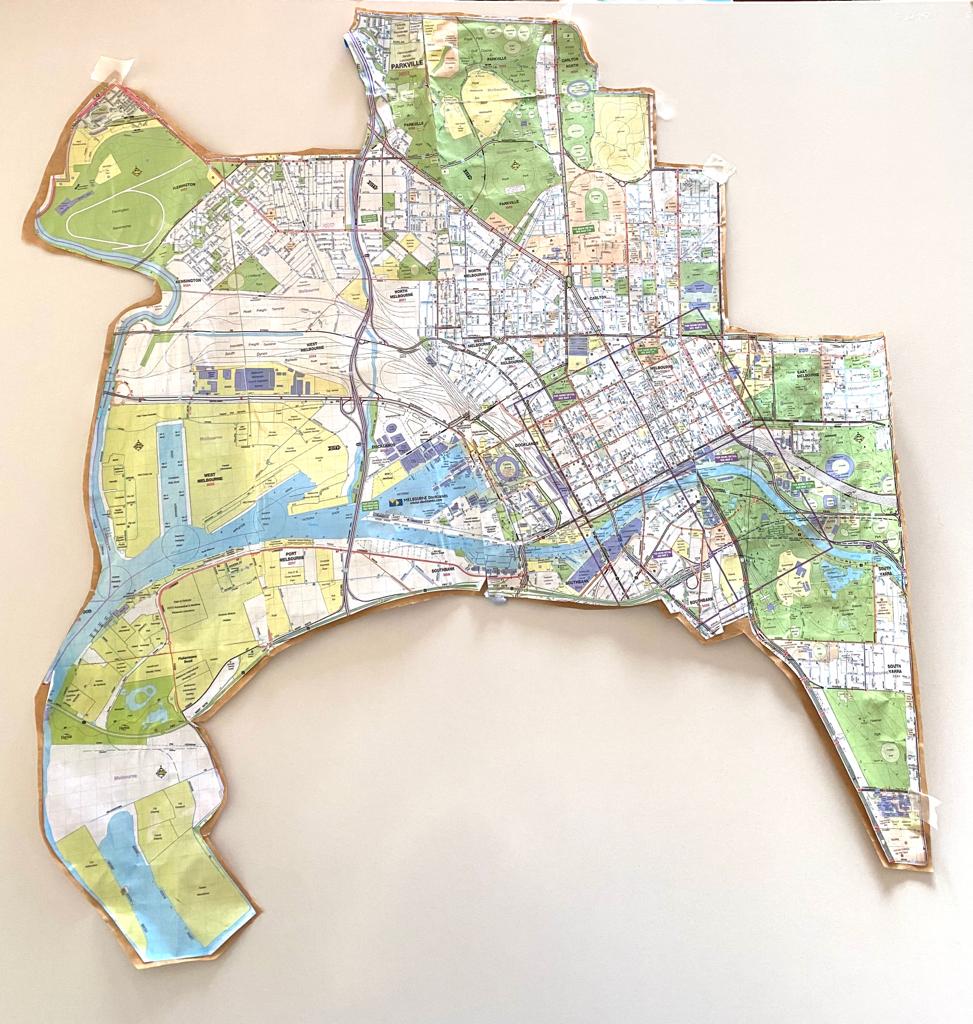
Brainstorming
Other ideas from the group included the following:
- Buildings with the river running though and connecting them
- A colourful background along the river with scattered images of buildings and people
- The river with images attached in some way in the foreground
- Images linked with each other in frames
- The river as a connecting image
- Layering the whole project
- Layering the project with the map of the City of Melbourne
My thought processes
The images below demonstrate my thought processes as I worked with the ideas and the images.
I used the ideas of connecting buildings, the river and a map of the City of Melbourne. After this, I added a series of ideas of buildings and icons of the city, with the river as a constant theme.

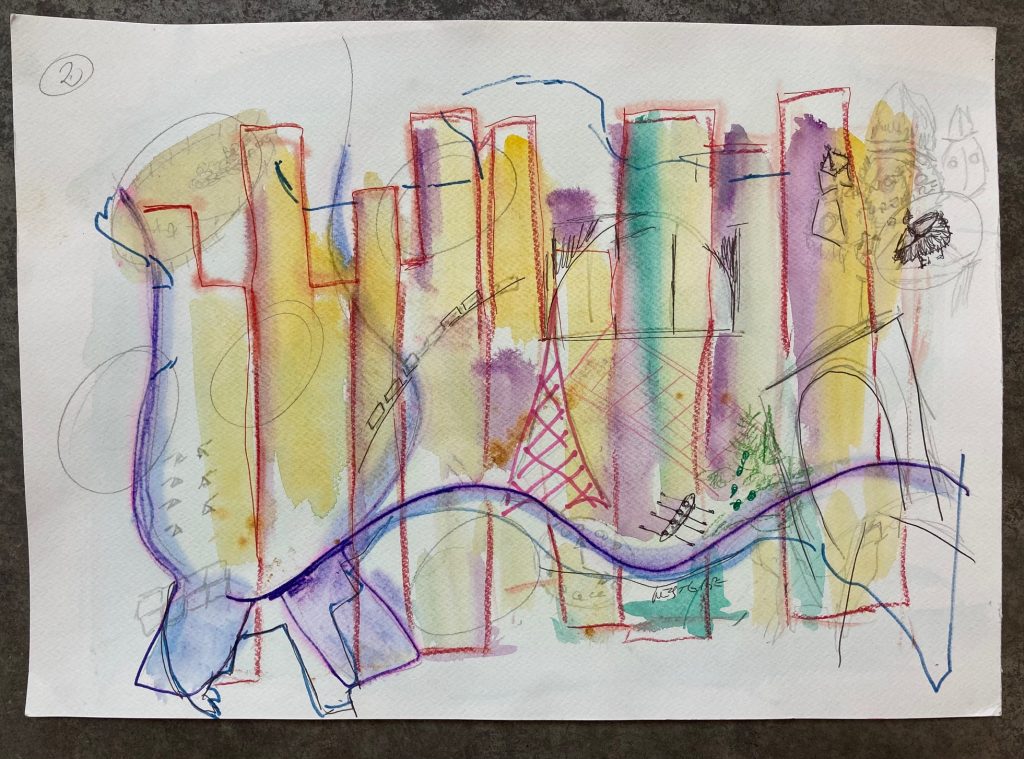
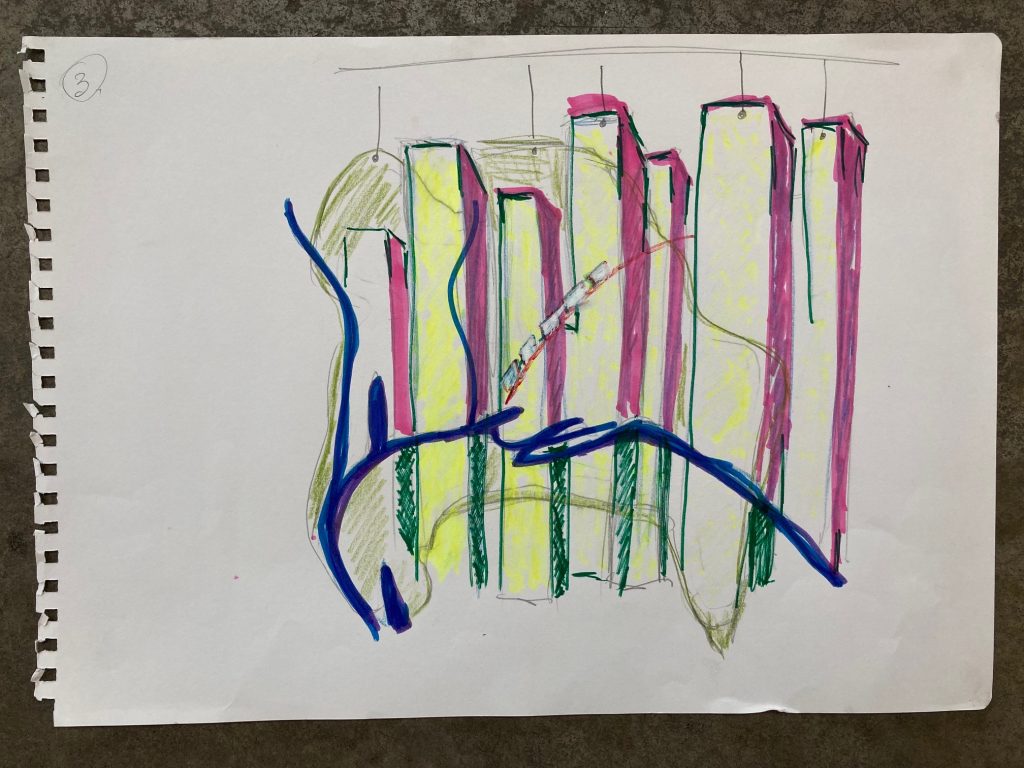
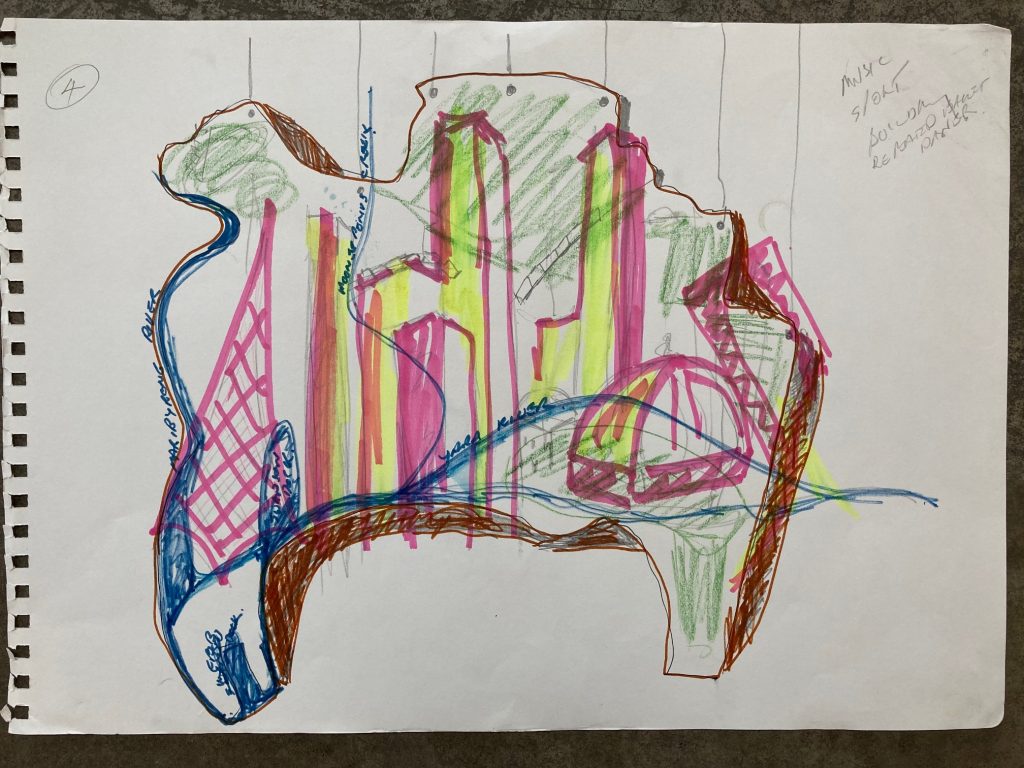
Finding a way for us to all work at the same time
I next tried layering the map with a Perspex image of the view of the river from the Swanston Street bridge. More importantly, though, I thought about how we could go about creating the work collectively.
My suggested process was to divide the work into sections, so that members could work on smaller pieces individually or in pairs. This would make it easier to develop a collective whole, without everyone having to meet together every time.
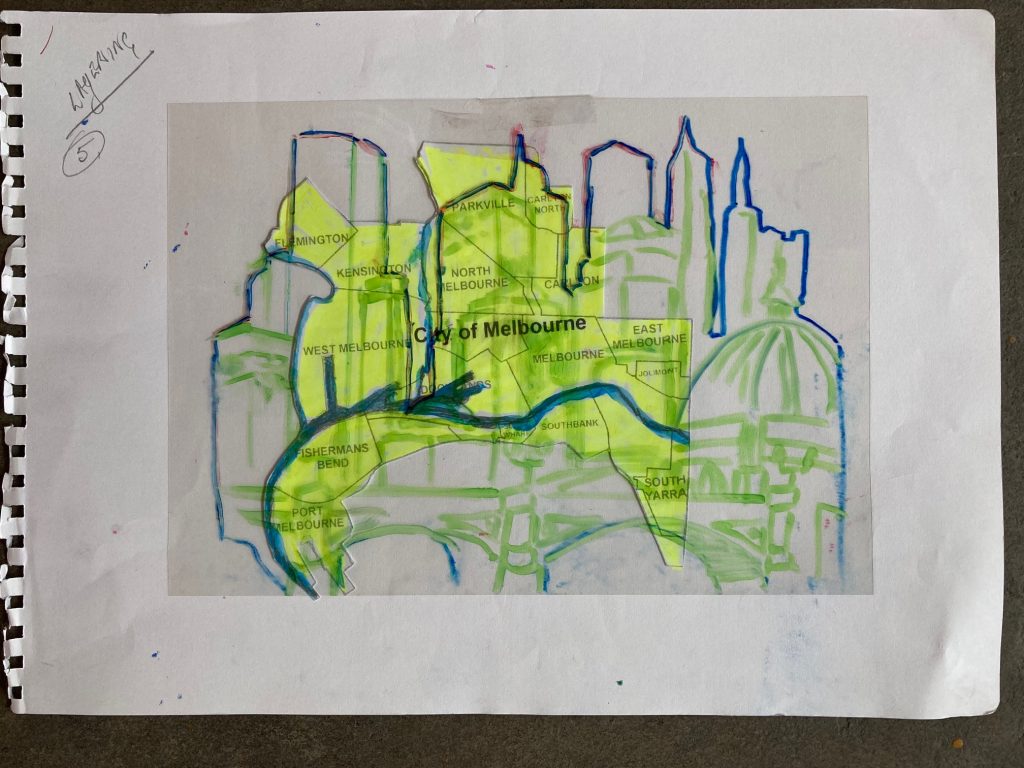
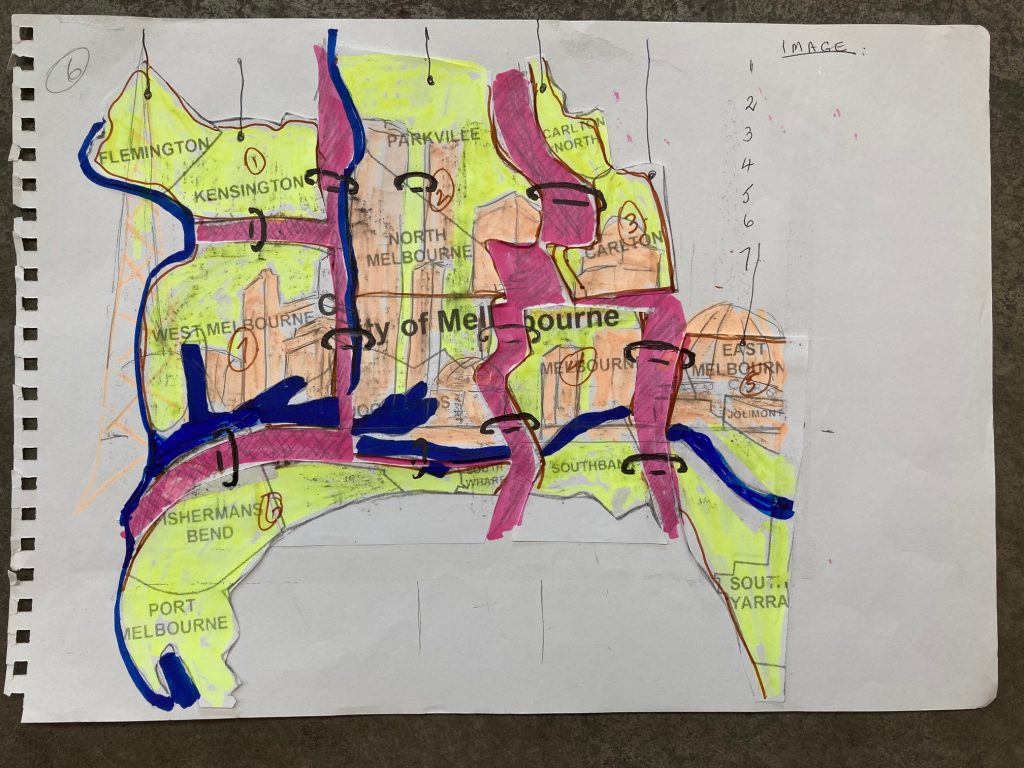
Leading to the exhibition of our collective work
The map idea could be used primarily as a background. Iconic images suggested at our first meeting could be added to this background.
The final collective work would include everybody’s favourite images, in whatever medium they felt comfortable working with. These could be scattered around the backdrop and attached via the grid, with hooks or macramé type ropes.


In order to display the collective work, we could link the separate pieces together on a metal grid such as ‘rebar’ or similar.
The background could be mounted on the wall or rested on the floor with plinths for heavier objects.
Postscript
As it turned out in our subsequent meetings, we did not proceed with most of these ideas because they did not suit the chosen exhibition space. However, I enjoyed playing with the concepts and may use one or two of them as part of my contribution to the collective work.

